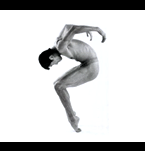
|
April 9, 2004 IF
'DANCE SALAD' HAD DRESSING, What happened to happiness? About three of the 15 pieces presented on the first night of this year's Dance Salad festival showed traces of it. Producer Nancy Henderek's annual international showcase has never been Nutcracker-esque holiday entertainment. But for provocative, sensual, dramatic intensity -- and yes, those welcome speckles of comic relief -- this is an egg-cellent basketful of dance excerpts from Scandinavia, China, Brazil and the United States. And what fab dancers this year! Thursday's treats were colored by conquest. The fiercest battle, choreographically speaking, was in Jirí Kylián's edgy and modern 27'52", danced with shardlike precision by Netherlands Dance Theatre II's Valentina Scaglia and Alejandro Martinez. Every crash of the Dirk Haubrich score brought another fierce trajectory -- an arm or a leg, usually aimed at a partner. Hard to believe the film clip from Kylián's Birth-Day was by the same choreographer. In this go-for-baroque funny bit, a 17th-century couple (Netherlands Dance Theatre III's Giocanda Barbuto and David Krügel) bounced with mad relish on a bed and each other, wigs and panniered skirt flopping. Different again was the cool elegance of Kylián's One of a Kind, in which dancers Cora Korese and Ken Ossola appeared to be two parts of a moving sculpture held upright through their opposing forces of weight. Helen Lai's dynamic 9 Songs pitted women against men in a fierce ritual. The evening's largest-scaled work, it featured 10 strong dancers from Hong Kong's City Contemporary Dance Company and a percussive score by Tan Dun. A river of red silk rained from the ceiling as the big warlord landed atop his female victim. The woman in Nacho Duato's lovely and sweeping Cor Perdut, (Hubbard Street Dance Chicago's Cheryl Mann) didn't fare much better. She was left in a heap by her man (Tobin Del Cuore), in spite of the sunny feel of the Catalonian music by Maria del Mar Bonet. There was no clear winner in Sami Saikkonen's sensuous Scene for a Man and a Woman, danced passionately by the handsome Saikkonen and the Finnish National Ballet's Nordic goddess Minna Tervamaki). High heels were the issue in Danny Roessel's over-long Silent Night ... Still We Dream, memorable mostly for dancer Douglas Gawriljuk's entrance: He slid slowly down a fireman's pole from the ceiling. But I had to cheer for Marifé Giménez at the end, when she handed him the shoes as if to say, "Here. If you like them so much, you wear them." The lengths a woman will go to for attention -- and the lengths men will take to impress her -- were more imaginatively handled in excerpts from Brazilian Henrique Rodovahlo's Choreography for Listening. Rodolvahlo's Quasar Companhia de Danca does everything right: choreography, characterization and simple but smashing sets. (This year's fabric backdrop, a huge but intricate quilt of red and earth tones, was museum quality.) Lavínia Bizzotto was super as a sly tease, ever-so-deviously rolling up bits of her costume to expose more skin while James Nunes and Gleidson Vigne competed for her, then was thoroughly defeated when she couldn't grab a look from a more self-absorbed third man (Marcello de sa Martins). Nunes and Gleidson were great, too, bouncing on their stomachs like a couple of shocked caterpillars and throwing themselves at the floor in capoeira-influenced acrobatic moves. According to the program, Choreography for Listening is "a dialogue between the popular music of Northeastern Brazil and the body language of the urban individual" -- so Bizzotto's character was a personification, perhaps, of Brazil's feminine spirit. Whatever. The language business came through in the last section, a brilliant "conversation" in which the dancers "spoke" with isolated body parts in synch with the soundtrack's talking voices. Paul Lightfoot's Shutter Shut also played superbly with spoken word. Here, NDT II's Scaglia was paired with Fernando Hernando Magadan in a delightfully quirky response to Gertrude Stein's nonsensical poem If I told him: A completed portrait of Picasso. I could watch this piece over and over without tiring of it. Quirkiness can be serious, too. Finnish choreographer Susanna Leinonen's stunning Trickle Green Oak conjured up a surreal realm where bodies broke with the sounds of icebergs crashing into the sea. In this amazing fusion of butoh and ballet, the Finnish National Ballet's Maria Tamminen, Sara Vuorinen, Johanna Nuutinen and Salla Suominen were 21st-century swans. They waivered convincingly between butoh's sickle-footed fragility and perfectly placed classical technique. The set was fantastic -- a crumpled column of shimmery white that might have been a melting iceberg. next review | Back to Concert 2004
|
Copyright © 2004 Dance Salad. All rights reserved.